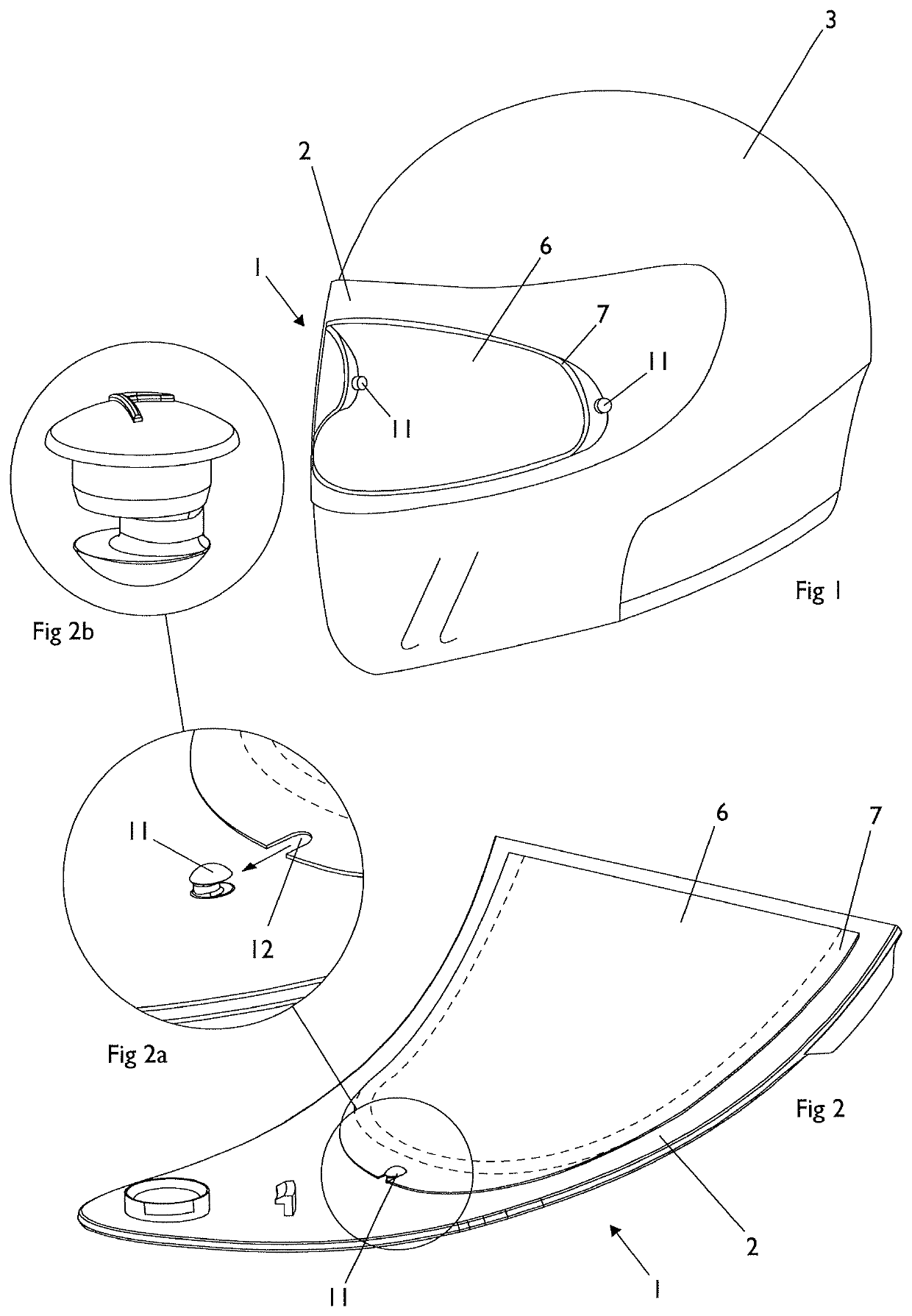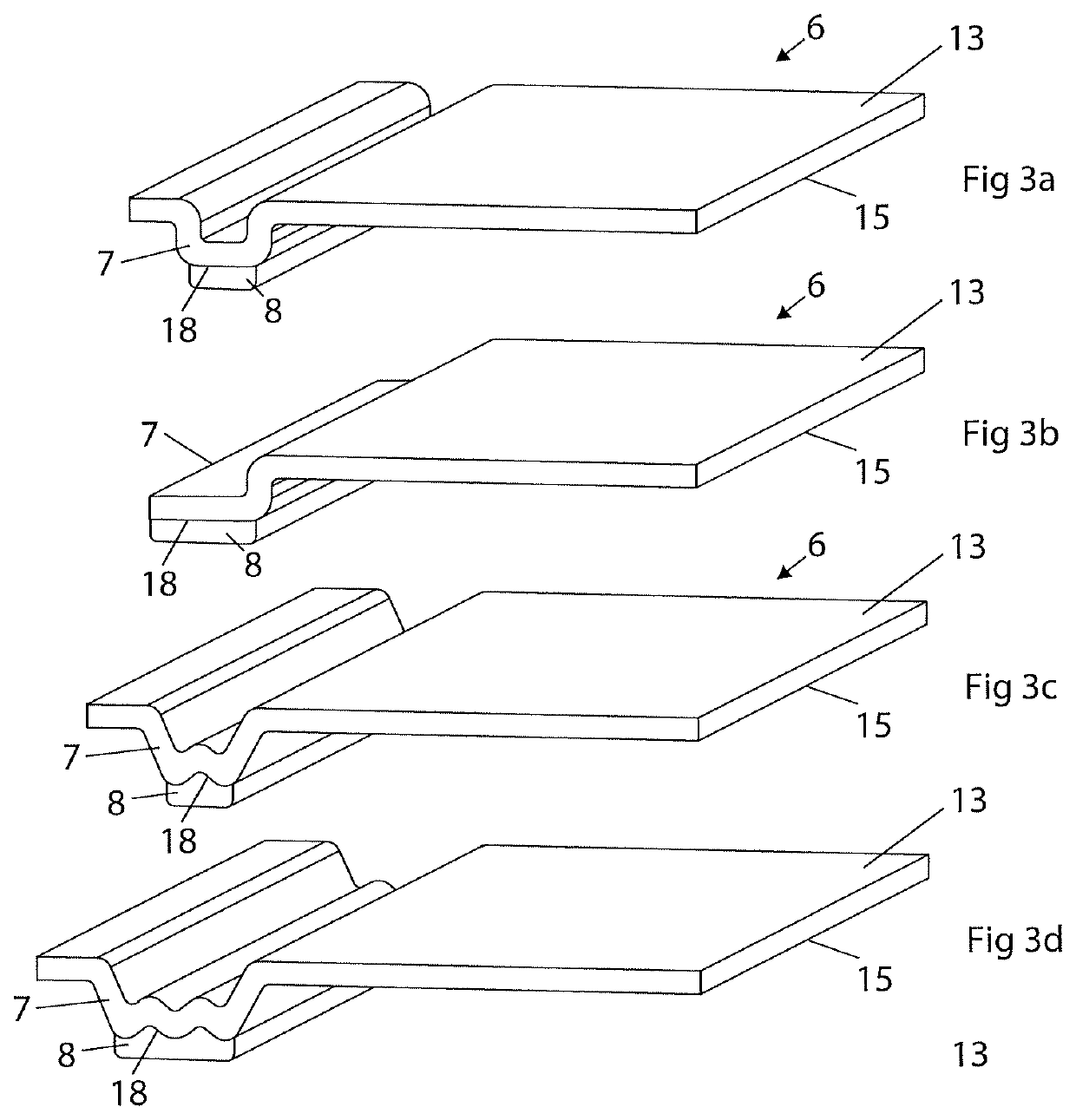Visor assembly
a technology of visors and components, applied in the field of visor assemblies, can solve the problems of leaking into sealed chambers, affecting the optical quality of the final product, and affecting so as to improve the performance of the visor assembly, constant force, and constant depth
- Summary
- Abstract
- Description
- Claims
- Application Information
AI Technical Summary
Benefits of technology
Problems solved by technology
Method used
Image
Examples
Embodiment Construction
[0067]FIG. 1 shows a motorcycle helmet having an opaque skull protecting portion 3 to which is attached a 3D visor assembly 1. There is provided a shield-visor 2 having releasably attached to its inner-surface an overlay-visor 6. The overlay-visor 6 is releasably attached to the shield-visor 2 by mechanical fastenings 11 at opposed ends of the shield-visor 2.
[0068]One of the mechanical fastenings 11 can be seen more clearly in FIGS. 2, 2a and 2b. It is comprised of an eccentric pin 11 fitted to the shield-visor 2. The overlay-visor 6 is provided with a recess 12 that mates with the eccentric pin 11. The mechanical fastenings 11 hold the overlay-visor 6 under tension within the inner curve of the shield-visor 2, that is the overlay-visor 6 is compressed between the pins 11. The eccentric pins 11 of this embodiment are rotatable into and out of engagement with the recesses 12 of the overlay-visor 6 in order to ensure a secure retention thereof. In the event that the overlay-visor 6 sh...
PUM
 Login to View More
Login to View More Abstract
Description
Claims
Application Information
 Login to View More
Login to View More - R&D
- Intellectual Property
- Life Sciences
- Materials
- Tech Scout
- Unparalleled Data Quality
- Higher Quality Content
- 60% Fewer Hallucinations
Browse by: Latest US Patents, China's latest patents, Technical Efficacy Thesaurus, Application Domain, Technology Topic, Popular Technical Reports.
© 2025 PatSnap. All rights reserved.Legal|Privacy policy|Modern Slavery Act Transparency Statement|Sitemap|About US| Contact US: help@patsnap.com



